Cabbage moth - «Mamestra brassicae» |
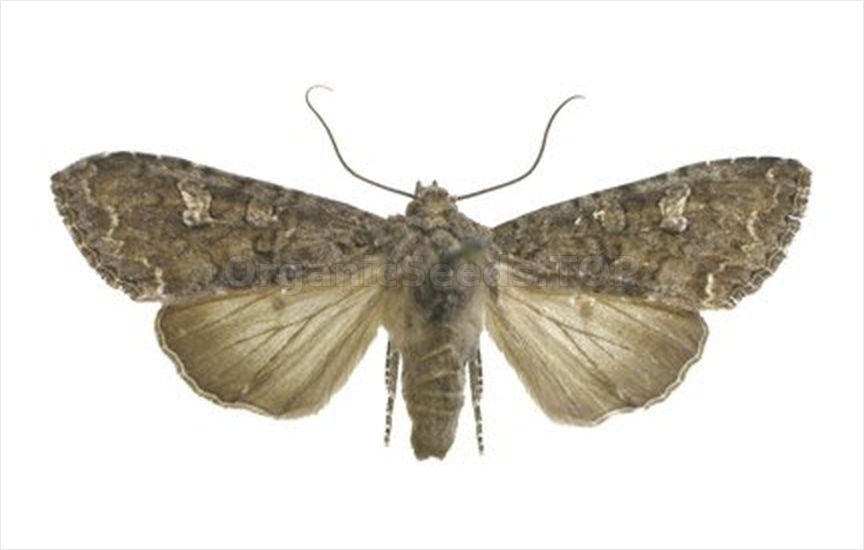 The cabbage moth - is a polyphagous pest. Under natural conditions, caterpillars feed on a variety of plants, but prefer cruciferous plants and quinoa. Reproduction is bisexual. Development is complete. The pupae overwinter. Depending on the climate of the area of residence, from 1 to 3 generations develop. MorphologyImago
A butterfly with a body length of 19-23 mm. Wingspan - 40-50 mm. The forewings are dark brown with dark transverse lines. The kidney-shaped spot is surrounded by white or partially white. The submarginal line is yellow-white with two teeth in the shape of the letter M. The hind wings are gray, darker at the edges. 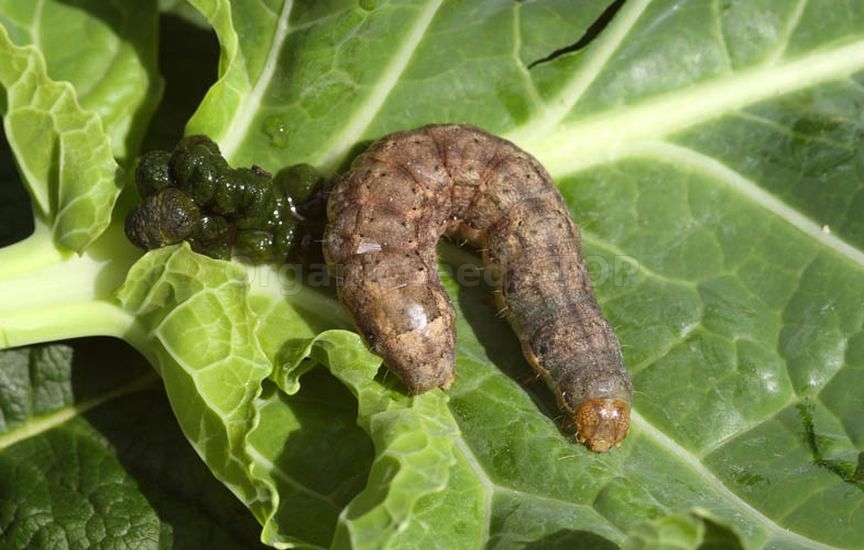 Sexual dimorphism Individuals of different sexes differ in the structure of their genital organs. Egg The egg is yellowish-white with 32-38 radially directed ribs. Diameter - 0.6-0.7 mm. Larva The larva (caterpillar), like all representatives of the noctuid family, has five pairs of abdominal legs, equipped with single-tiered or double-tiered hooks located on the sole in a medial row. Length - 35-40 mm. The color is variable - from grayish-green to dark brown or almost black. On the dorsal side there is a pattern of dark spots in the form of a herringbone, especially well expressed on the last segments of the abdomen. The sides of the body are yellow with light stripes. Pupa The pupa is 19-24 mm long, the cover is red-brown. The cremaster has two long projections ending in a flattened club. DevelopmentImago
The emergence of butterflies begins in late spring or early summer. In a single-generation zone, butterflies emerge in June. To lay eggs, females need additional nutrition on flowering vegetation. The lifespan of a female is 2-3 weeks. The flight of second generation butterflies is observed from the second half of July to the beginning of September. 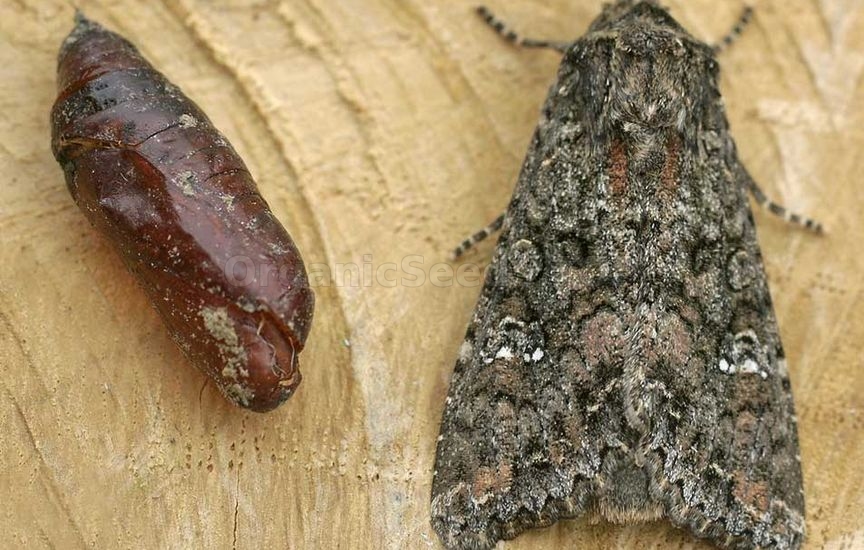 Mating period Mating takes place 2-3 days after departure. The next day, the females begin to lay eggs, placing them on the underside of the leaves in one layer of 20-150 eggs per clutch. The fertility of a female is from 600 to 2700 eggs. The masonry looks like an irregularly shaped spot. Egg The embryo develops within 4-12 days. Larva The larva (caterpillar) develops from 24 to 50 days, depending on the temperature and humidity of the air and soil. The caterpillar molts five times and goes through six instars. In the first instar, the caterpillars skeletonize the leaves from below, leaving the epidermis of the upper side intact; in the second and third instars, they gnaw out through holes. 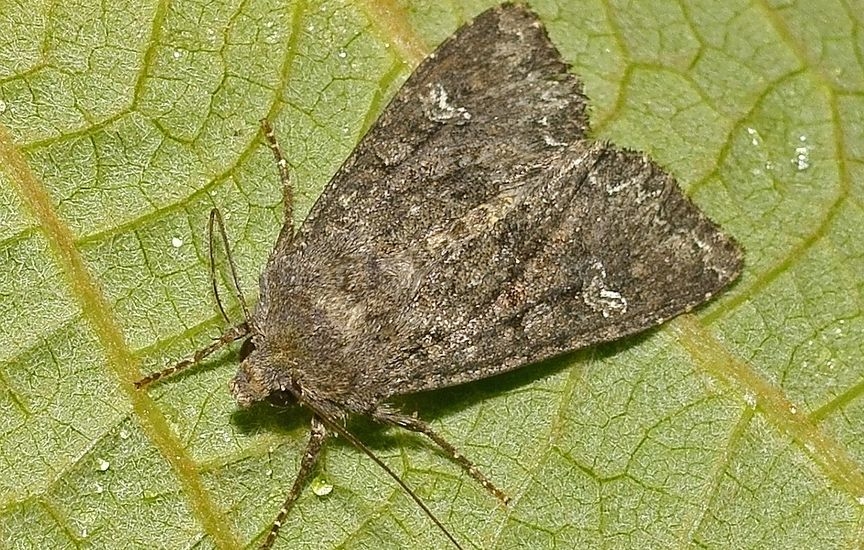 At an older age, the leaves are eaten almost completely, leaving only the very veins. When developing on cabbage, caterpillars of middle and older age groups enter the cobs, making winding passages in them, which are subsequently filled with caterpillar excrement. This leads to rotting of the cobs. Caterpillars developing on beets damage plant leaves and the upper parts of roots. In poppy, the seed pods are damaged; in corn, the leaves and grains on the cob are damaged. During mass reproduction, they climb onto bushes and trees, damaging the fruits and leaves of apple trees and bunches of grapes. Pupa Caterpillars of the first generation pupate at the end of June, the second - in September-October in earthen nests. The pupae overwinter in the soil. 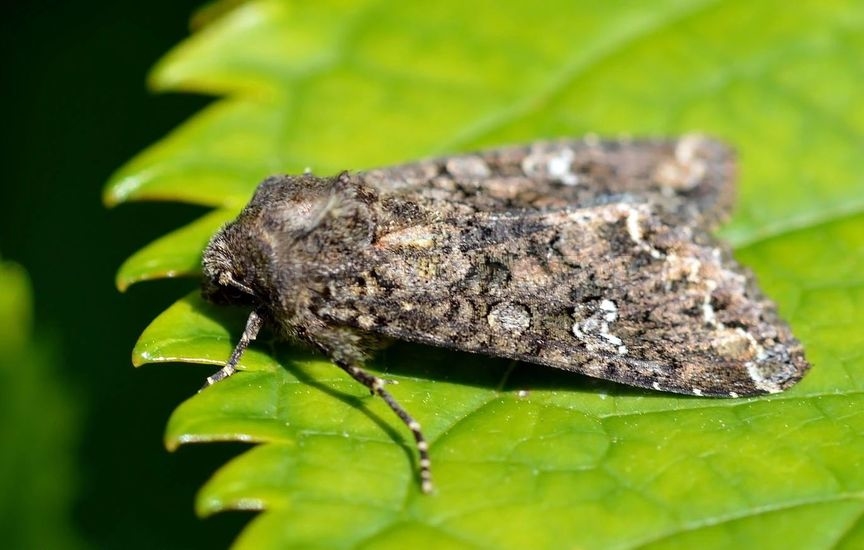 Abiotic factorsCabbage moth - is a moisture-loving insect. Most often found in areas with high humidity, especially in river bays. An increase in numbers is observed with a combination of warm, moderately humid weather, the presence of flowering vegetation during the summer of butterflies and food plants for caterpillars. Low air humidity causes the death of caterpillars, and the absence of flowering nectar plants causes a sharp decrease in the fertility of butterflies. Overwintering pupae are able to withstand prolonged flooding. The number of generations per season depends on the climate of the location. Thus, in the mountains of the northern part of the range only one generation develops, in the southern parts of the range - two or three. The cabbage moth severely damages cruciferous crops, especially various types of cabbage, legumes, and sugar beets. In addition, damage to sunflower, tobacco, castor oil, sesame, poppy, safflower, sage, potatoes, belladonna, tomatoes, rhubarb, carrots, corn, lettuce, hemp, flax, buckwheat, fruit trees, and ornamental plants is noted. Caterpillars are harmful. The economic threshold of harmfulness in early varieties is determined at the stage of the beginning of head formation and is established when 1-3 caterpillars are detected per plant when 10% of the plants are populated or 5-8 caterpillars per 1 square meter. In late varieties - at the same stage (beginning of head formation) and is established when 5 caterpillars are detected per plant when 10% of the plants are colonized.
You may need:«Cabbage moth» trapPheromone trapsGlue trap (single adhesive cardboard) 205x125 mm |
|
|
